Mold is an all too common problem in the modern world due to poor construction methods and practices as well as other issues that encourage its growth such as humidity and water exposure. This is a problem because mold produces mycotoxins, toxic compounds which are devastating for the health of humans and animals. In fact, some sources claim that many common health problems may be caused by hidden mold that’s producing these toxic substances. The problem of mycotoxins in children and adults isn’t one that’s widely accepted or easily identified, but it’s a serious issue that may have implications for your overall health.
 Certain types of molds produce mycotoxins, which are toxic compounds that are protein synthesis inhibitors. This means that they stop or slow the growth of cells, which is one of the reasons why the effects of mycotoxins in children are so dangerous. Molds also don’t just produce one type of mycotoxin; they produce a series of them that will have a variety of effects on the body. Mycotoxins are toxic, they’re very hard to kill and you will need to use heat over 500 degrees Fahrenheit for 30 minutes to get rid of them, and HEPA filters can’t remove them from the air. The only type of filter that removes mycotoxins is activated carbon filters.
Certain types of molds produce mycotoxins, which are toxic compounds that are protein synthesis inhibitors. This means that they stop or slow the growth of cells, which is one of the reasons why the effects of mycotoxins in children are so dangerous. Molds also don’t just produce one type of mycotoxin; they produce a series of them that will have a variety of effects on the body. Mycotoxins are toxic, they’re very hard to kill and you will need to use heat over 500 degrees Fahrenheit for 30 minutes to get rid of them, and HEPA filters can’t remove them from the air. The only type of filter that removes mycotoxins is activated carbon filters.
Unfortunately for everyone’s health, mold is extremely common. It can grow on lots of different types of food such as dried fruits, spices, nuts, and cereals. In fact, most types of foods have a small amount of mold on them, and when you eat them your immune system can get rid of them through urine or feces. Mold can grow on food at any stage during its growth, harvest, or storage, and it likes warm, humid, and damp conditions.
There are hundreds of different types of mycotoxins that have been identified, and there will probably be more identified in the future. Several of these mycotoxins threaten the lives of humans and animals alike. Some of the most problematic include patulin, ochratoxin A, aflatoxins, zearalenone, fumonisins, and nivalenol/deoxynivalenol.
People usually become exposed to mold and its mycotoxins by ingesting infected food or eating products that were made from animals that were fed infected food. However, you can also inhale it or be exposed through dermal contact.
Mold can also grow in rooms and buildings because of water leaks and poor construction methods. It can also begin to grow after natural disasters, particularly storms and flooding, when water leaks into people’s houses. Mold likes to grow in cellulose, which is found throughout modern buildings and homes. And it can turn your haven, the place where you and your family have always been safe and secure, into one of the worst sources of mycotoxins in children.
It isn’t always easy to tell if you’ve been exposed to mold, which is why the problem of mycotoxins in children is so dangerous and widespread. Some researchers believe that up to 50 percent of illnesses may be linked to air pollution, with a large proportion of these cases caused by mold exposure. Unfortunately, people can have different reactions to mold, which is why it isn’t always easy to tell if you’ve been exposed. Some of the most common symptoms of exposure, depending on how much and how long you’ve been exposed, are the following:
However, each type of mold gives off different mycotoxins, which can result in different symptoms and health problems. This is why the problem of mycotoxins in children is so hard to identify and address.
Children can obviously be exposed to mold directly, but there are some very important and unexpected issues that affect mycotoxins in children. These include:
However, this doesn’t mean that it’s safe for adults to be exposed to mycotoxins. These are still toxic compounds that will have very negative effects on your body and on your overall health. And if you have health disorders such as adrenal fatigue, you may experience even more severe consequences as a result of mycotoxin exposure.
Once your body is exposed to mold, it will need to activate it’s detoxification circuit to remove the mold from your body. Your detoxification circuit is the set of organs and systems responsible for clearing your body of metabolites as well as other toxins. When toxins enter your body, detoxification breaks them down into metabolites so they can be safely excreted from the body.
The organs and systems that are responsible for the processes of detoxification are the liver, the immune system, and the interstitium. The interstitium is comprised of the fluid-filled spaces that exist between the skin and cell walls, that line certain organs such as the digestive tract, and that surround the muscles.
When there’s a build-up of metabolites, it can cause the three organs and systems in this circuit to become unbalanced. There are several things that can cause a buildup of metabolites including poor sleeping habits, too much or too little exercise, poor dietary habits, illness or injury, infections, environmental toxins, medication, drug use, and poor digestion.
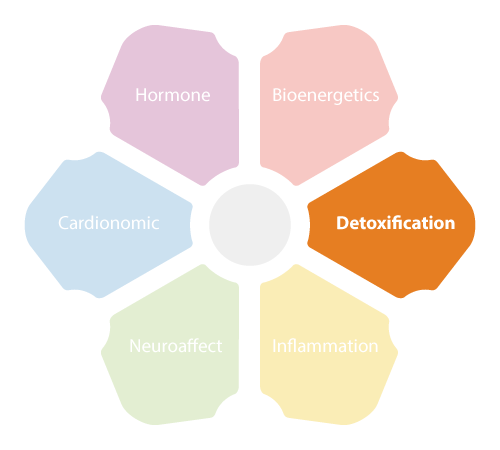 Issues that cause problems with the detoxification circuit can also cause or exacerbate Adrenal Fatigue Syndrome (AFS), which is connected to chronic stress. Your body responds to stress with the NeuroEndoMetabolic (NEM) Stress Response, which is a model explaining how different organs and systems react to stress, allowing you to fight or run away. But when your stress is ongoing, as it often is in the modern world, the NEM stress response must work overtime, and so must the organs that are key to your body’s stress response.
Issues that cause problems with the detoxification circuit can also cause or exacerbate Adrenal Fatigue Syndrome (AFS), which is connected to chronic stress. Your body responds to stress with the NeuroEndoMetabolic (NEM) Stress Response, which is a model explaining how different organs and systems react to stress, allowing you to fight or run away. But when your stress is ongoing, as it often is in the modern world, the NEM stress response must work overtime, and so must the organs that are key to your body’s stress response.
The adrenal glands are usually the first to feel the effects of this overwork because they produce cortisol, sometimes known as the stress hormone. Cortisol is essential throughout the body, but when there are excessive amounts of it in your system over long periods it can cause problems and lead eventually to adrenal fatigue.
The detoxification circuit is often one of the first places that’s affected by persistently high cortisol levels. High stress levels often result in the production of high levels of metabolites. Over time, the liver, which turns the metabolites into a harmless form that can be easily expelled from the body, becomes congested and starts to slow down. This pollutes the interstitium with harmful metabolites. And because the metabolites are sensed as a harmful substance by your body, this causes immune system hyperactivation, which means that inflammation levels will increase. All these problems, in turn, create more metabolites and worsen the original problem.
Mycotoxins in children and adults can cause overactivation of the immune system. If your immune system is already hyperactive because of AFS and high cortisol levels, this will worsen the situation. Overactivation of the immune system is a problem because of inflammation. Inflammation is a natural process that’s designed to rid your body of toxins and other invaders. It is an essential process that’s designed to die down once the invader is expelled. But chronic, ongoing inflammation is different.
Chronic inflammation has been linked to several serious diseases such as heart disease, stroke, and certain types of cancer. It can increase your risk of developing diabetes and encourage plaque buildup in your arteries. When you have AFS, the build-up of metabolites and the increasing imbalances in the detoxification circuit often result in the immune system becoming hyperactive, which results in ongoing, high inflammation levels.
If you’re exposed to mold at the same time, it will only increase inflammation levels and contribute to the toxic build-up in your body. Your immune system may also become less able to fight off the damaging effects of mycotoxins because it’s already so overloaded. This means that even low levels of mycotoxins, which your immune system could usually effectively eliminate, may start to cause health problems. This may lead to increasing and dangerous levels of inflammation as well as worse than expected health consequences from the mycotoxins themselves.
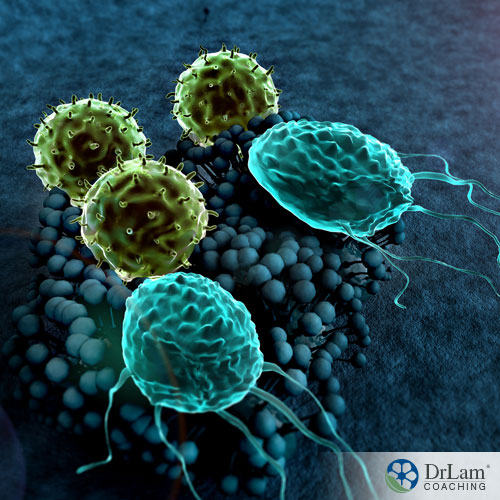 Research into the effects of mycotoxins in children has shown that they can also directly affect the immune system. Ochratoxin, for example, causes zinc deficiencies, which can depress the immune system and leave your body less capable of fighting off the effects of mycotoxins.
Research into the effects of mycotoxins in children has shown that they can also directly affect the immune system. Ochratoxin, for example, causes zinc deficiencies, which can depress the immune system and leave your body less capable of fighting off the effects of mycotoxins.
Mycotoxins can also affect the health and the functioning of the gut, causing a variety of digestive problems and malfunctions. The mycotoxin ochratoxin alters the barrier of the intestines and negatively affects absorption, which can result in a leaky gut. And the health of your gut directly affects the health and the functioning of your immune system, which means that an unhealthy gut will throw off its natural balance, which in turn will affect the functioning of the entire detoxification circuit and cause more inflammation.
One common mycotoxin known as ochratoxin induces cell cycle arrest in the liver, which can result in long term damage and cell death. If you have imbalances in the detoxification circuit because of AFS, your liver is probably overtaxed and congested from the build-up of metabolites. So, if you’re exposed to this mycotoxin, your liver function will be further impeded by the damage, which can result in further congestion and faster metabolite build-up.
The third part of the detoxification circuit which can be affected by mycotoxins is the interstitium. These fluid-filled spaces act as a highway for nutrients and other matter between the separate organs in the body. When you have AFS, these highways can become clogged with metabolites and other toxins, resulting in the body developing a variety of very troubling symptoms.
If you’re exposed to mycotoxins, they will also build up in these highways, further slowing down the flow and contributing to the body’s toxicity. The body will also be slower to expel the toxins because of the congestion in the interstitium and the liver, which means that the mycotoxins will be in the body longer than normal and will be able to do more damage.
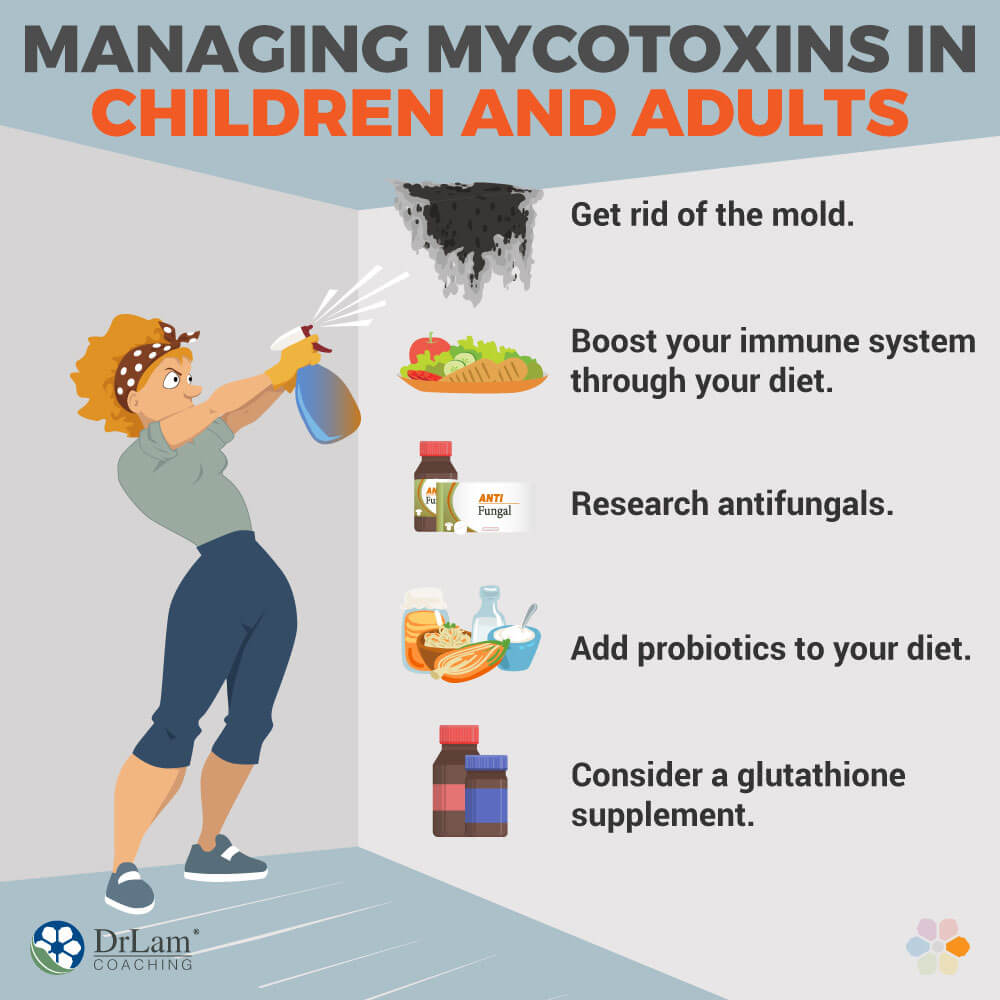
The type of care required for mycotoxins in children and adults will depend on the extent of the symptoms and the type of mycotoxins you’ve been exposed to. However, there are some general tips that apply to most people. These include:
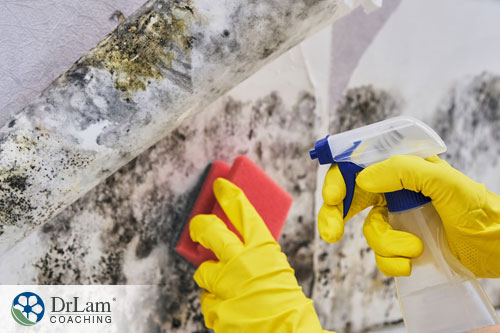
All these strategies can help with recovery from mycotoxins in children and adults. However, if you have AFS then you need to be careful when you make major lifestyle or dietary changes or add supplements. Make sure you talk with a medical professional first to ensure that the changes aren’t going to increase your stress levels or contribute to additional health problems in an already overloaded body.
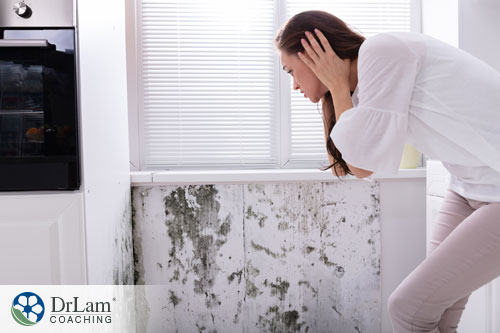 The problem of mycotoxins in children is a very serious one that will probably become better understood in the future with more research. And the danger of mold has implications for your health as an adult as well. Mold is often a hidden problem, one that you can’t easily see or identify, and it can cause a variety of health problems and diseases. Because mold can block the synthesis of proteins important for growth, and because children have slower detoxification systems, less developed immune systems, and smaller bodies that are more likely to go in moldy places, they are more susceptible to the dangers of mold exposure. However, vulnerable adults, such as those with adrenal fatigue, are also highly susceptible. Taking steps to reduce mold exposure and boost your immune system and detoxification is essential to managing mycotoxins in children and adults.
The problem of mycotoxins in children is a very serious one that will probably become better understood in the future with more research. And the danger of mold has implications for your health as an adult as well. Mold is often a hidden problem, one that you can’t easily see or identify, and it can cause a variety of health problems and diseases. Because mold can block the synthesis of proteins important for growth, and because children have slower detoxification systems, less developed immune systems, and smaller bodies that are more likely to go in moldy places, they are more susceptible to the dangers of mold exposure. However, vulnerable adults, such as those with adrenal fatigue, are also highly susceptible. Taking steps to reduce mold exposure and boost your immune system and detoxification is essential to managing mycotoxins in children and adults.
Mycotoxins in children in children can be more severe than adults because children are vulnerable even in the womb, and their smaller and less developed bodies are less able to handle the effects of mold. Also, because they are still growing, they are more vulnerable to mycotoxins that block protein synthesis.
